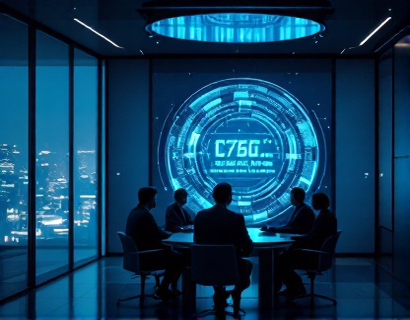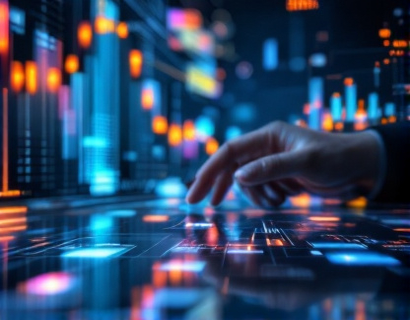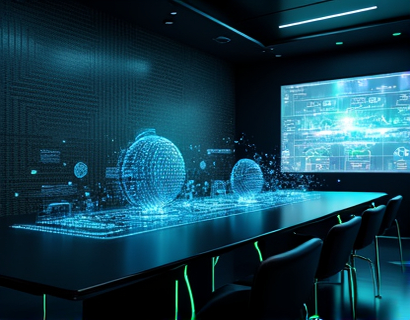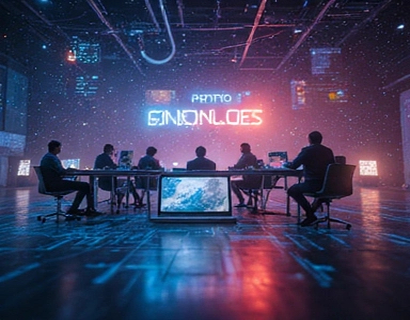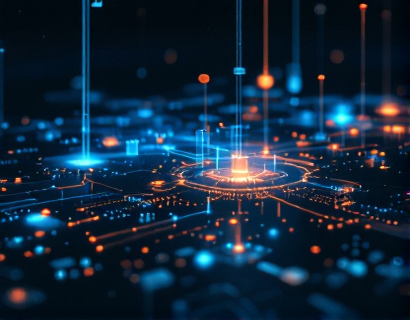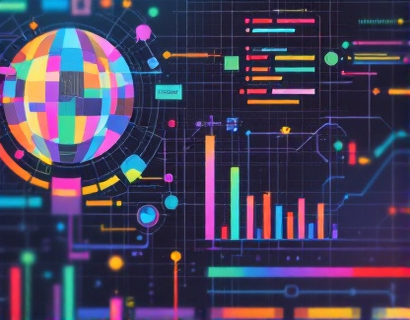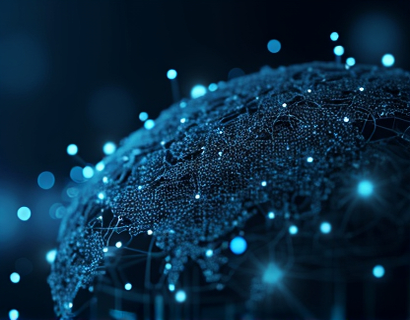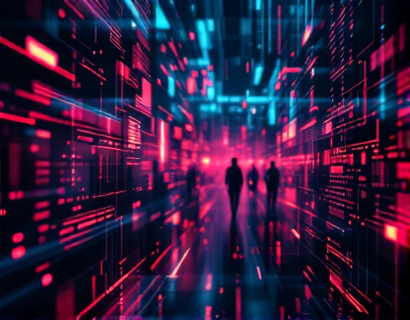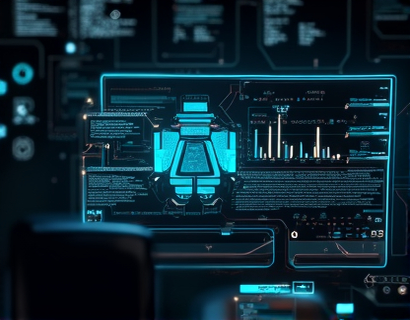Unlocking Digital Potential: Leveraging AI and Crypto for Next-Gen Productivity Solutions
The digital landscape is undergoing a profound transformation, driven by the convergence of artificial intelligence (AI) and cryptocurrency. This synergy is not just a trend but a fundamental shift in how we approach productivity, innovation, and the future of work. For tech-savvy innovators and early adopters, understanding and leveraging this intersection offers unprecedented opportunities to enhance efficiency, security, and creativity. This article explores the ways in which AI and cryptocurrency are reshaping the digital landscape, providing insights and solutions for those eager to embrace the next generation of productivity solutions.
Understanding the Synergy of AI and Cryptocurrency
AI and cryptocurrency may seem like disparate technologies, but their integration is creating powerful tools that can revolutionize various industries. AI, with its ability to process vast amounts of data, learn from patterns, and make decisions, is the backbone of modern productivity solutions. Cryptocurrency, on the other hand, offers a decentralized, secure, and transparent way to conduct transactions and manage assets. When combined, these technologies can address some of the most pressing challenges in digital productivity.
The synergy between AI and cryptocurrency is evident in several key areas: security, transparency, automation, and decentralization. Security is a paramount concern in digital transactions and data management. Cryptocurrency's blockchain technology provides an immutable and transparent ledger, ensuring that data and transactions are secure and tamper-proof. AI enhances this by analyzing patterns and detecting anomalies, further fortifying security measures.
Transparency is another area where AI and cryptocurrency intersect. Blockchain's inherent transparency ensures that all transactions are visible and verifiable, reducing the risk of fraud and increasing trust. AI can process and analyze this data in real-time, providing insights and alerts that help users make informed decisions. In the context of productivity, this means more reliable and trustworthy systems that can operate with minimal human intervention.
Automation is a cornerstone of AI, enabling the streamlining of repetitive tasks and the optimization of workflows. When paired with cryptocurrency, automation can be taken to new heights. Smart contracts, self-executing contracts with the terms directly written into code, can automate complex processes without the need for intermediaries. AI can enhance smart contracts by analyzing data and conditions, ensuring that transactions are executed efficiently and accurately.
Decentralization is the final pillar of this synergy. Traditional centralized systems are often bottlenecks for innovation and efficiency. Cryptocurrency and blockchain technology promote decentralization, allowing for peer-to-peer interactions and distributed networks. AI can manage and optimize these decentralized systems, ensuring they operate smoothly and effectively. This combination fosters a more democratic and inclusive digital environment, where innovation is not hindered by centralized control.
Enhancing Security in Digital Transactions
Security is a critical aspect of any digital solution, and the integration of AI and cryptocurrency offers robust protections. Blockchain's decentralized nature means that data is not stored in a single location, making it highly resistant to hacking and data breaches. Each transaction is encrypted and linked to the previous one, forming a chain that is nearly impossible to alter without detection.
AI plays a crucial role in enhancing this security. Machine learning algorithms can monitor blockchain networks in real-time, identifying and responding to potential threats before they become significant issues. AI can detect unusual patterns or behaviors that may indicate a security breach, allowing for immediate action to be taken. This proactive approach to security is essential in a world where cyber threats are becoming increasingly sophisticated.
Moreover, AI can improve the user experience by simplifying complex security protocols. For instance, biometric authentication, powered by AI, can provide a seamless and secure way to access digital services. This not only enhances security but also makes it more user-friendly, encouraging broader adoption of secure digital solutions.
Streamlining Workflows with AI-Driven Automation
One of the most significant benefits of combining AI and cryptocurrency is the ability to automate workflows efficiently. Traditional workflows often involve multiple steps and intermediaries, leading to delays and inefficiencies. Smart contracts, driven by AI, can automate these processes, ensuring that tasks are completed accurately and on time.
For example, in supply chain management, AI can track the movement of goods in real-time, updating smart contracts as each step is completed. This ensures that payments are made automatically when conditions are met, reducing the need for manual intervention and speeding up the entire process. Similarly, in project management, AI can monitor task completion, resource allocation, and budget adherence, adjusting plans as needed to keep projects on track.
Cryptocurrency adds another layer of efficiency by providing a seamless and secure way to handle transactions. Digital currencies can be used for payments within these automated systems, eliminating the need for traditional banking processes. This not only speeds up transactions but also reduces costs and increases transparency, as all transactions are recorded on the blockchain.
Fostering Innovation through Decentralized Platforms
Decentralization, a core principle of cryptocurrency, is revolutionizing the way we approach innovation. Traditional centralized platforms often limit creativity and innovation due to gatekeeping and bureaucratic processes. Decentralized platforms, powered by blockchain and AI, remove these barriers, allowing for a more open and collaborative environment.
Decentralized applications (dApps) are a prime example of this innovation. These applications run on blockchain networks and are governed by community protocols rather than central authorities. AI can enhance dApps by providing advanced analytics, personalized user experiences, and predictive insights. For instance, a decentralized marketplace can use AI to analyze user behavior and preferences, recommending products or services that are most relevant to each user.
Moreover, decentralized finance (DeFi) platforms are redefining financial services by offering lending, borrowing, and trading without traditional financial intermediaries. AI can optimize these platforms by analyzing market trends, assessing risks, and automating trading strategies. This not only makes financial services more accessible but also more efficient and secure.
Building a Decentralized Economy
The combination of AI and cryptocurrency is not just about improving existing processes; it's about building a new economy that is more equitable and sustainable. Decentralized economies, supported by blockchain and AI, can distribute wealth more evenly and provide opportunities to underserved communities.
Tokenization, the process of converting assets into digital tokens on a blockchain, is a key mechanism in this new economy. AI can enhance tokenization by analyzing asset values, predicting market trends, and optimizing token distribution. This ensures that tokens are issued and traded fairly, maximizing their value and utility.
Furthermore, AI can facilitate the creation of decentralized autonomous organizations (DAOs), which are community-driven entities governed by smart contracts. DAOs can pool resources, make decisions democratically, and execute projects transparently. AI can manage the day-to-day operations of DAOs, ensuring that they function efficiently and in line with their goals.
Challenges and Considerations
While the potential of AI and cryptocurrency in enhancing productivity is vast, there are challenges and considerations that must be addressed. One of the primary concerns is regulatory uncertainty. The rapid evolution of these technologies often outpaces legal frameworks, leading to a patchwork of regulations that can hinder innovation.
Another challenge is the technical complexity involved in integrating AI and cryptocurrency. Developers and organizations need to have a solid understanding of both technologies to implement them effectively. Education and training are essential to bridge this gap and ensure that the benefits of these technologies are fully realized.
Privacy is also a critical issue. While blockchain's transparency is a strength, it can also raise concerns about data privacy. AI can help mitigate these concerns by implementing advanced encryption and privacy-preserving techniques, ensuring that sensitive information is protected.
Conclusion
The convergence of AI and cryptocurrency is unlocking new possibilities for digital productivity, offering solutions that are more secure, efficient, and innovative. For tech-savvy innovators and early adopters, embracing this synergy can lead to significant advancements in how we work and interact in the digital world. By leveraging the strengths of both technologies, we can build a more resilient, inclusive, and productive digital economy. The future is bright, and those who harness the power of AI and cryptocurrency will be at the forefront of this exciting transformation.









